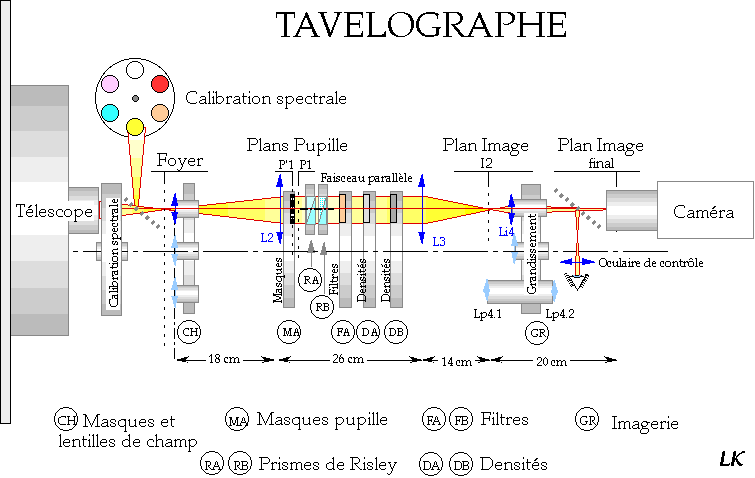
The last successful observing run at Telescope Bernard Lyot at Pic du Midi. The June 98 run led to only one observable night, which was dedicated to binaries. Check the page of Jean Louis Prieur for results.
Here is a cketch of our speckle camera "PISCO"

The classical Speckle interferometry technique is used, in photon counting mode. Each photon is correlated with a group of others arriving in the next milliseconds of time.
time.............................t0......t1............(t1+t2)...................................t3...........(t3+t2)
"added intercorrelation".......*--------/**********/
"subtracted intercorrelation"....*-----------------------------------------------------------------/**********/
Here is an example of the resulting correlated image on the double star ads 11842:
In this case, t1, t2, and t3 are respectively 1, 6, 10 and 20 ms. Even at 6 ms, the signal is strongly degraded by the displacement of speckles due to atmospheric seeing.
ads 11998 ; ads 14424 and HR 8652 (triple star)
The picture of HR 8652 comes from a previous observing run at
the same 2 meter telescope Bernard Lyot (TBL) with a resistive anode photon
counting detector: the RANICON, lent to us by STScI.
In order to reconstruct the images, we use bispectral techniques.
This image of HR 8652 is obtained by a quick
photon counting triple correlation algorithm from RANICON data.